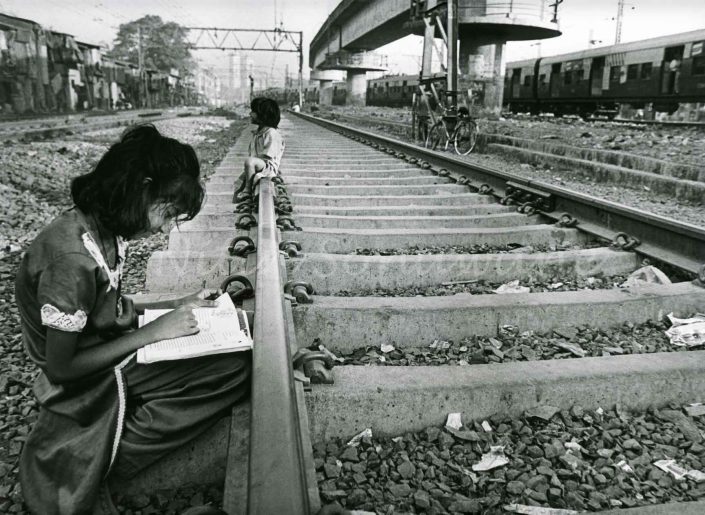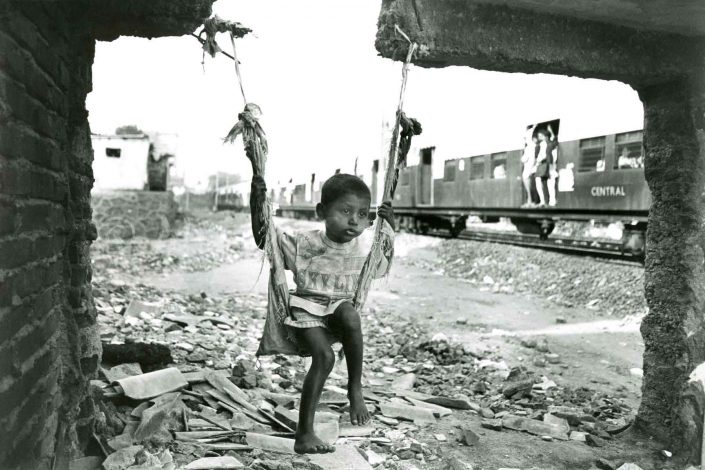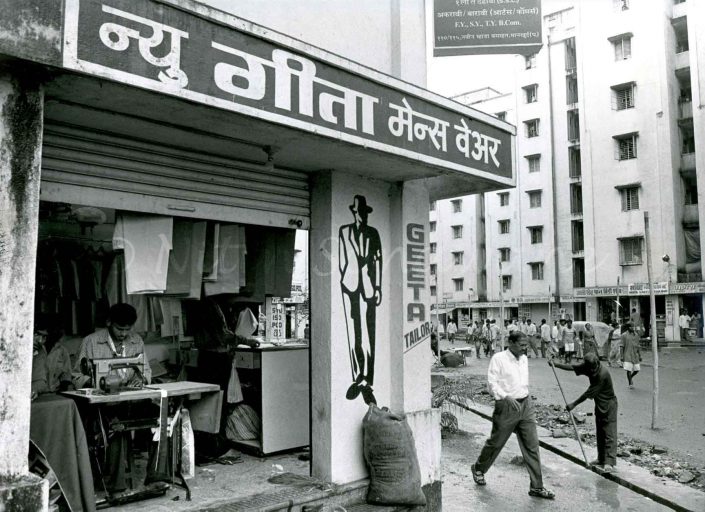TRACKS
Life in Mumbai's Death Traps
A photo-study
By Nitin Sonawane
The railway in India is the lifeline of India, connecting millions of Indians across the length and breadth of the country. The India Railways is the biggest mass transporter which manages more than 100,000 km of tracks all over India and carries more than 11 million people a day. However the same lifeline remains one of the biggest mass killers. Over so many decades, thousands of people have been killed or maimed by trains. The situation is particularly acute with people who live near the tracks, for every day, death is just meters away from them.
The situation is more acute in the Mumbai suburban railway system, which transports millions of people from one part of the financial nerve centre of the country to another. The central railways (CR) runs around 1090 trains everyday, carrying a total of 2.7 million commuters. The Western railways (WR) runs 901 services daily carrying around 2.6 million passengers. And as the population increases day by day, the load on the suburban railway system also increases manifold.
The continuous migration of people from India into Mumbai seeking employment has seen the mushrooming of hutments along the railway tracks in the city. The slums along the tracks enjoy the patronage of slumlords who construct hutments almost overnight with the tacit help of the local police and this has resulted in hundreds of slum pockets coming up on railway land in the late 1980s. The railway administration continued to ignore the problem until daily accidents began occurring in these areas. By 2000, an estimated 25,000 hutments were located in the land termed by the railways as the safety zone.
The problem became so acute that daily accidents were recorded in these extremely overpopulated areas. The mushrooming hutments also slowed down the movement of suburban trains in sectors like the Harbour Line, with motormen forced to drop to speeds up to 15 kmph. Frequent breakdowns also increased, leading to a massive public opinion in favour of removing encroachments from the railway land. After a long legal battle, the railway administration armed with Bombay High Court directive, finally launched a huge operation to remove slums from the safety zones. However, slums continue to be rebuilt even today.
To counter the problem, the railways and NGOs like Railway Slum Dwellers Federation in a joint effort decided to control the encroachment and rehabilitate the slum dwellers in an alternative accommodation. This helped clear up the railway traffic and improved efficiency. By 2002, over 13,000 hutments on the three suburban railway lines have been demolished, and their occupants rehabilitated in areas like Mankhurd, Antop Hill, Dharavi and Wadala. SPARC, another NGO involved in the rehabilitation, accommodated many in transit camps set up specially to relocate these slum dwellers.
A Photographer's Viewpoint
Being among the 60 lakh passengers who commute everyday in Mumbai, my reasons for choosing this subject for a study was the incredible lives the slum-dwellers lead - fraught with danger at literally every step. A train chugs along on the railway tracks every three minutes. The railway stations become the backyards for most slum-dwellers, and virtual playgrounds for their children. I noticed that despite the constant danger of being run-over by a speeding train, the slum-dwellers continued to struggle, work, and earn a living in these circumstances.
I discovered bizarre situations as I photographed people non-chalantly sipping tea at makeshift tea stalls and restaurants along the railway tracks. Enterprising women convert the tracks into an open-air laundry, with washed clothes spread along the tracks. Open-air haircutting salons operate briskly here. Poor farmers migrating into Mumbai convert the grassy patches of land along the tracks into fertile patches for growing vegetables. Even cheap sex is available along the railway tracks as commercial sex workers set up shop for the working class migrants.
I feel my photo-study will highlight this theatre of life in the shadow of death and help create awareness and raise questions about human development and its complexities in Indian cities.
As the life of the people living near the railway tracks is a study in itself, I wish to take my effort further and bring out a book, which essentially encapsulates their lives in various stages. I have spent around 4 years walking the railways tracks and capturing the moments through the camera lens. And there is more to cover. I have witnessed the various moments of their lives and the danger of death being so close. Right from the time they have lived so close to the tracks to now, when they are being re-habilitated and shifted to safer zones.
In the time to come, the lives and the perils that these people endure will become history and will only reflect in the memories of thousands. Therefore the objective of the book is to keep the story alive through pictures. I believe my work will enables others in the time to come to understand the hardships and the danger that millions of people went through living near the tracks.












































